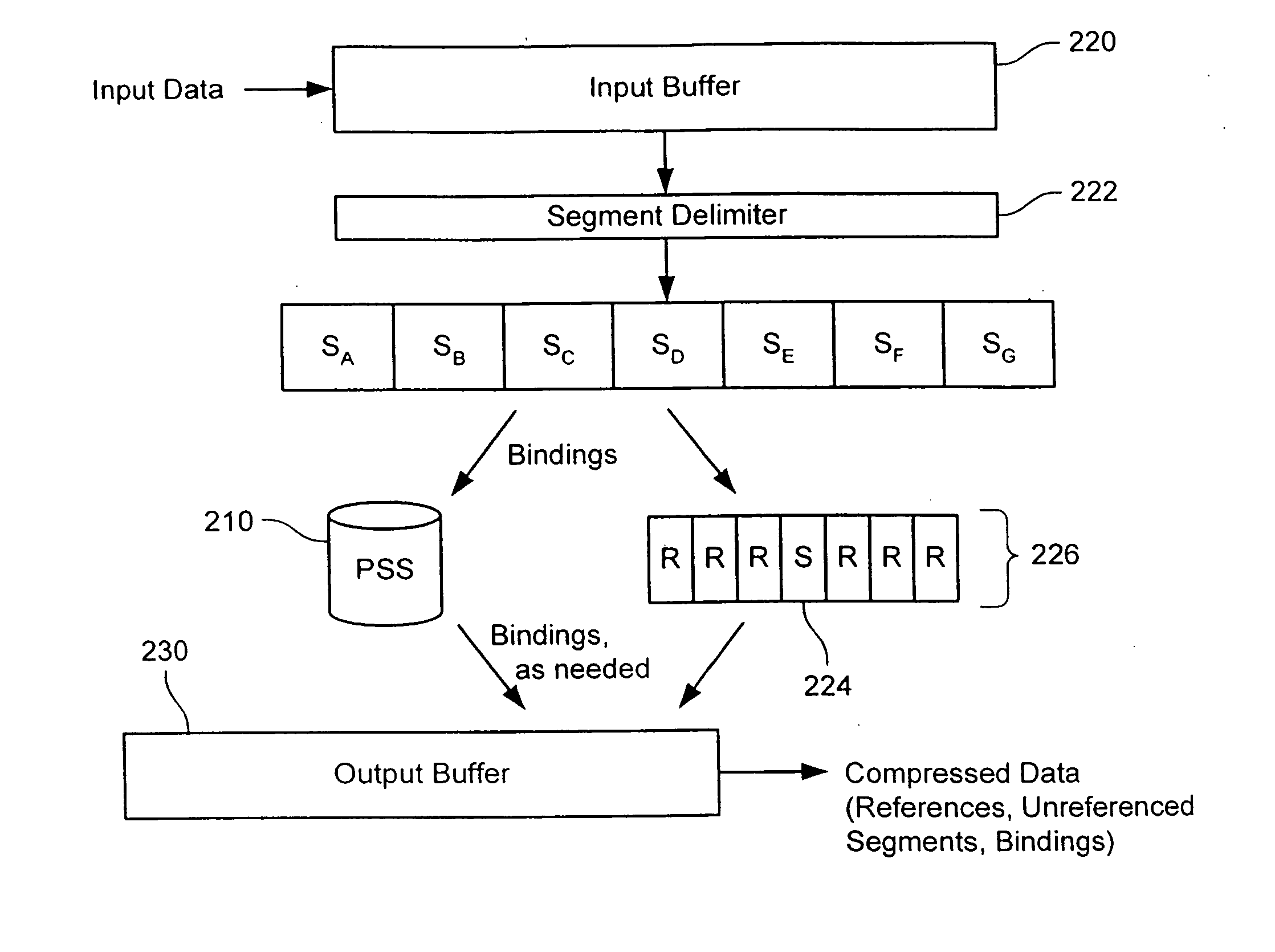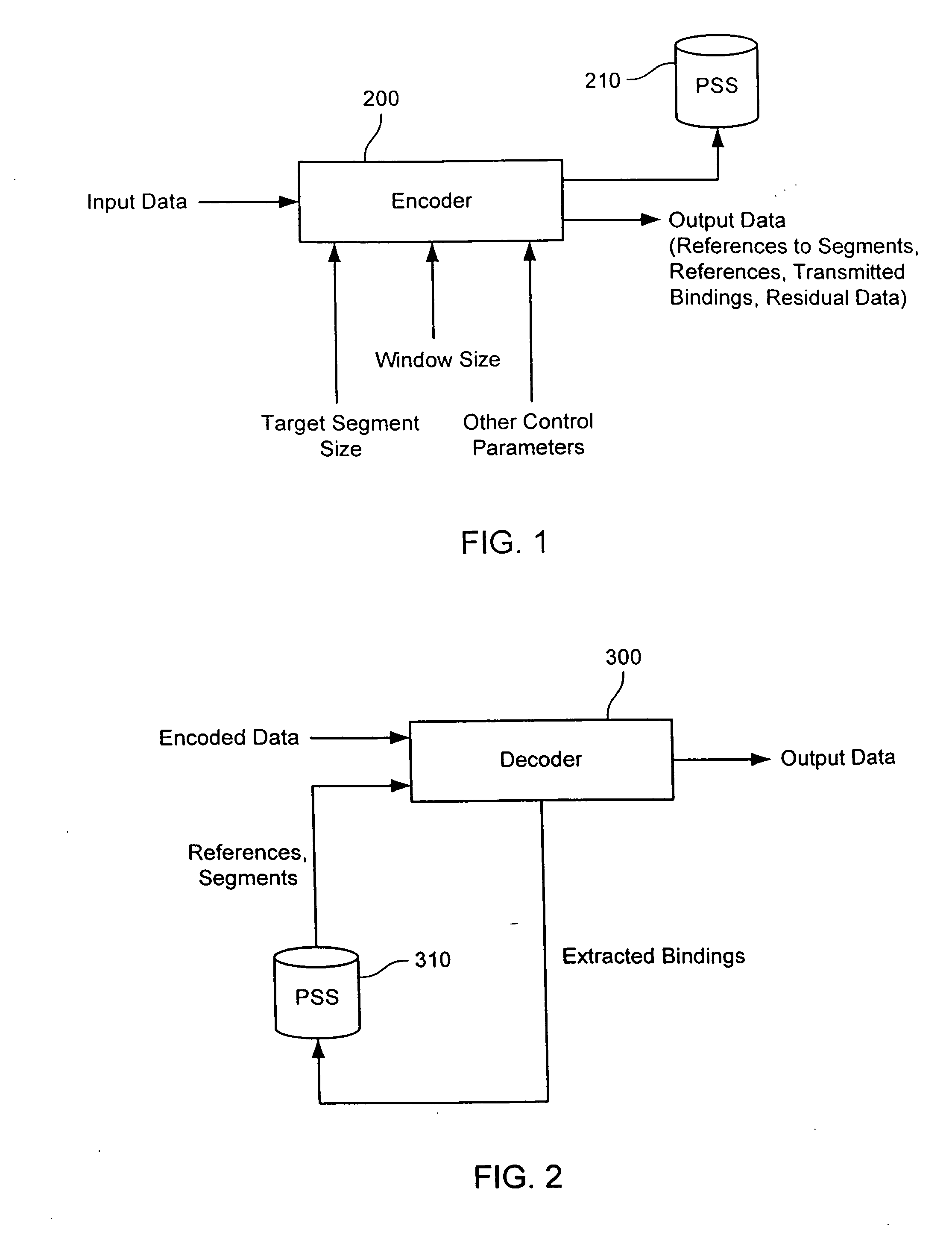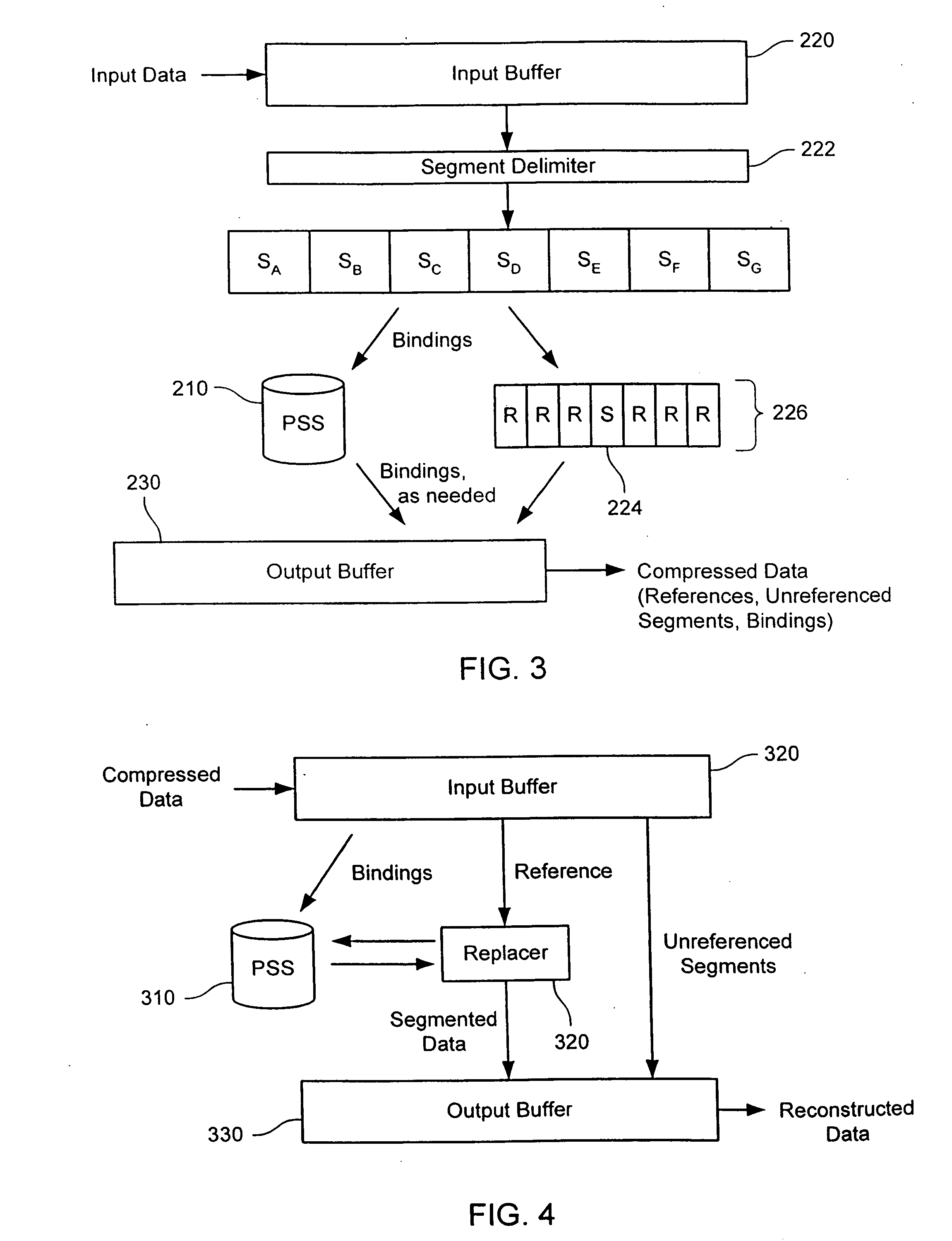Content-based segmentation scheme for data compression in storage and transmission including hierarchical segment representation
a data compression and content-based segmentation technology, applied in the field of data compression, can solve the problems of high information redundancy present in data stored and communicated across enterprise systems and networks, net compression as a whole, and add to storage effor
- Summary
- Abstract
- Description
- Claims
- Application Information
AI Technical Summary
Benefits of technology
Problems solved by technology
Method used
Image
Examples
Embodiment Construction
[0036] The present invention has many applications, as will be apparent after reading this disclosure. In describing an embodiment of a compression system according to the present invention, only a few of the possible variations are described. Other applications and variations will be apparent to one of ordinary skill in the art, so the invention should not be construed as narrowly as the examples, but rather in accordance with the appended claims.
[0037] Coding (encoding, decoding) can be done by a number of different devices, which might involve hardware, software, or both. Coding can be done with a computer, computing device, peripheral, electronics, or the like, and / or using an application being executed or controlled by such element. Coding might be done incident to a transport process, such as that described in McCanne I. Using the coding apparatus and processes described herein, the responsiveness of transactions over a network can be improved by lessening the number of bits ...
PUM
 Login to View More
Login to View More Abstract
Description
Claims
Application Information
 Login to View More
Login to View More - R&D
- Intellectual Property
- Life Sciences
- Materials
- Tech Scout
- Unparalleled Data Quality
- Higher Quality Content
- 60% Fewer Hallucinations
Browse by: Latest US Patents, China's latest patents, Technical Efficacy Thesaurus, Application Domain, Technology Topic, Popular Technical Reports.
© 2025 PatSnap. All rights reserved.Legal|Privacy policy|Modern Slavery Act Transparency Statement|Sitemap|About US| Contact US: help@patsnap.com



